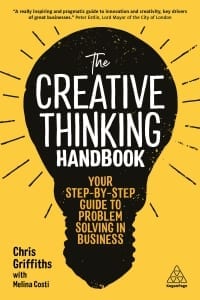Rethinking Daydreaming: Why A Wandering Mind Benefits Business

In our productivity-obsessed world, “daydreaming” is not a popular concept. After all, who has time to sit with their feet up, lost to the world, while notifications overflow their many digital devices? Our modern culture sees daydreaming as either a luxury or just plain laziness – but in reality, focused daydreaming is a powerful tool of ideation that businesses cannot afford to overlook. If the mind is a machine, daydreaming is the oil that keeps the cogs moving. From writer’s block, to tricky problems, trying to force ideas only tightens everything up; hence pushing forward becomes impossible. Businesses that welcome daydreaming see the value in letting employees get up from their desk so they can spend some time going for a wander or relaxing in a new environment. This space to breathe will be far more effective in producing top ideas and creative solutions to problems than getting someone to force it out through hard work ever could be.
To harness the power of focused daydreaming, you have to make it practical. As nice as looking out the window thinking about dinner might be, it’s unlikely to produce any ground-breaking ideas. Perhaps you’re wondering how then, on occasion, good ideas come to you at random times? The answer lies in the separation of the conscious and unconscious brain. While you’re thinking of other things, your subconscious keeps ticking over in the background. This is where goal-oriented thinking comes in; for daydreaming to be productive, it is key you marry the goals of your two distinct minds. Fuel your brain by doing your homework. Spend some time gathering and processing all the relevant information – remember, you don’t have to do anything with it just yet, you just need to make sure you have good knowledge of all the relevant resources. With your mind full of information, switch off and do something else for 30 to 60 minutes. Have a coffee, go for a walk, doodle, listen to music – whatever it is that suits you, totally remove yourself from the problem for that block of time. When you come back, you’ll likely find that fresh ideas and solutions are suddenly available to you – and if they’re not, try the process again. Take breaks, breathe; the lower the pressure, the more likely you are to actually discover the answer you’re searching for.
For the remaining daydream skeptics, just take a look at some of the world’s most prominent geniuses and artists. Einstein credits daydreaming – or what he called his ‘thought experiments’ – with some of his greatest achievements, having apparently come up with his theory of relativity whilst imagining the journey he’d take sitting on a beam of light. The composer Mozart would daydream about music while on walks through the tranquil countryside, allowing the sounds of nature to become the foundation of his later compositions. Thomas Edison had an unusual technique wherein he’d hold ball bearings whilst relaxing, as he began to fall asleep, he’d drop the balls thus waking himself up so he could note down any ideas that came to him. The list of daydream advocates is long and embellished with innovators, but there is only one way you can prove the power of daydreaming in business to yourself and colleagues: that is to try it. So wise up, walk away, and discover what new and inventive solutions come to you whilst thinking of other things – so you can finally achieve that “Eureka!” moment.
About the Author













Leave a Reply
Want to join the discussion?Feel free to contribute!